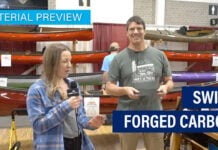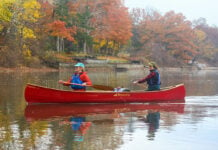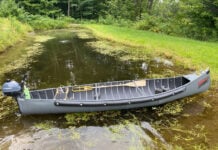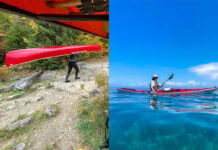Last fall, Steve Childs, the designer and owner of Silverbirch Canoes, called and said he’d snuck the very first Silverbirch Covert 9.3 into the country and asked if he could leave it with me for a few days. Hell, yeah.
The Silverbirch Covert is a durable craft
The Covert ships trimmed with burly ash gunwales and overbuilt thwarts. Forty-eight-inch air bags tuck beneath black-laced bag cages. The 12-inch-long bow and stern decks offer just enough room for molded-in alloy grab handles and rescue attachment points. The rest of the deck is open, the way it should be. It’s a good-looking boat.
The Covert is available in a single layer polyethylene material that Silverbirch calls Duratough, and also in a three-layer option called Duralite, which is actually tougher and 4.5 pounds lighter. Strange, I know.
Basically, instead of one layer of plastic, Duralite is three layers—an outer layer, a layer of foam and an inner layer.
Once I got Childs talking about plastics he pulled out his smartphone and showed me pictures of a Covert hull he drilled full of holes to measure the thickness at different points. The secret to weight savings, he says, is getting the foam layer thicker where it needs to be tough and thinner where he can save weight.
A fast and intuitive ride
A dry fall had left our rivers lower than normal. The run was shallow and creeky, just how I like it. Perfect for the Silverbirch Covert canoe.
The Covert is initially less stable than a Nova Craft Ocoee, and rolls smoothly from side to side. This comfortable secondary stability doesn’t hang you way out there. Once I realized I was pushing the Covert past its natural stable resting point I soon forgot about tilting altogether. I can just paddle the Covert and it does the right thing—muscle memory and boat design coming together as one.
Another thing I love about the Silverbirch Covert is what it doesn’t do. It doesn’t get knocked off line. Not once have I been tripped up by squirrely currents or waves. How fast is the Covert? I’d need more time on flatwater to see if it is truly as fast as it feels, or if it just feels river fast because I can concentrate on forward momentum, not correction strokes. Either way, it works for me.
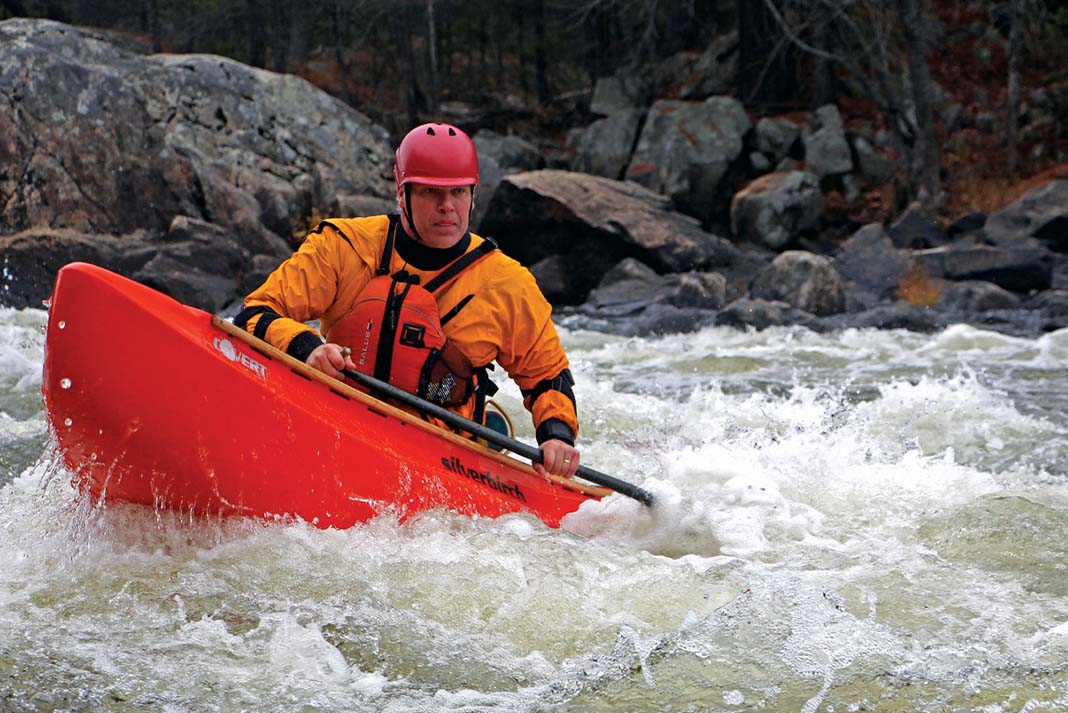
The Covert flat-out performs
I think the reason I can paddle the Covert almost flat is due to its radical double chine. If I over-tilt when I drop into a small hole to surf or spin, I climb up and off the foam pile. The game is to see how level and how far upstream I can push it. The answer? Way more than you’d think.
Childs kept the sheer to a minimum, which I noticed right off when my first few cross strokes didn’t clip the bow. Another benefit of the flatter deck is that it allows the Covert to turtle completely. When you flip to your offside, the Covert settles mostly upside-down, saving you the funky chicken underwater sweep stroke to get to your paddling side for a roll.
The Covert’s shallow bow and stern put the decks a few inches closer to the water—so what? So, don’t let the Covert run down the face of the wave and pearl in the trough. Keep it carving on the face where you should be and where the Covert is stable, predictable and so much fun.
Ride high with the Silverbirch Covert canoe
There is a lot to love about the Silverbirch Covert canoe. And if nothing above struck your fancy, I should mention that the Duralite version can be ordered in yellow, orange, red, pink, green, blue and of course black. Mix and match inner and outer colors for a truly custom ride.
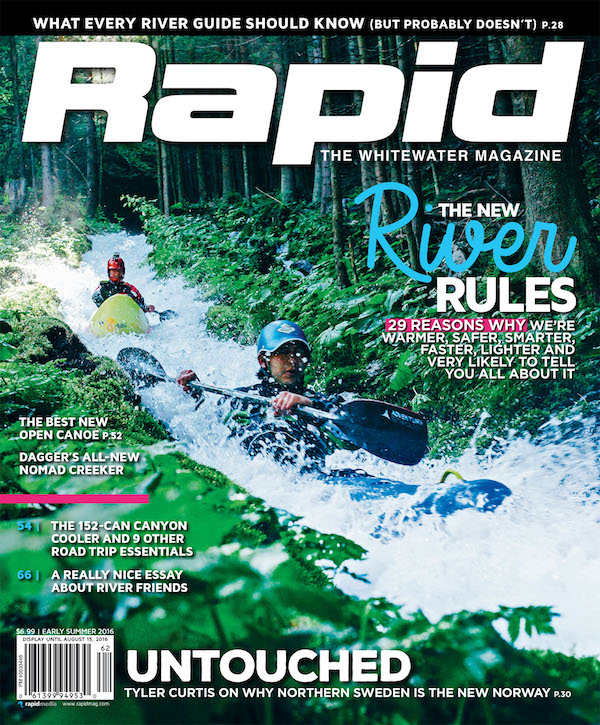
Subscribe to Paddling Magazine and get 25 years of digital magazine archives including our legacy titles: Rapid, Adventure Kayak and Canoeroots.



